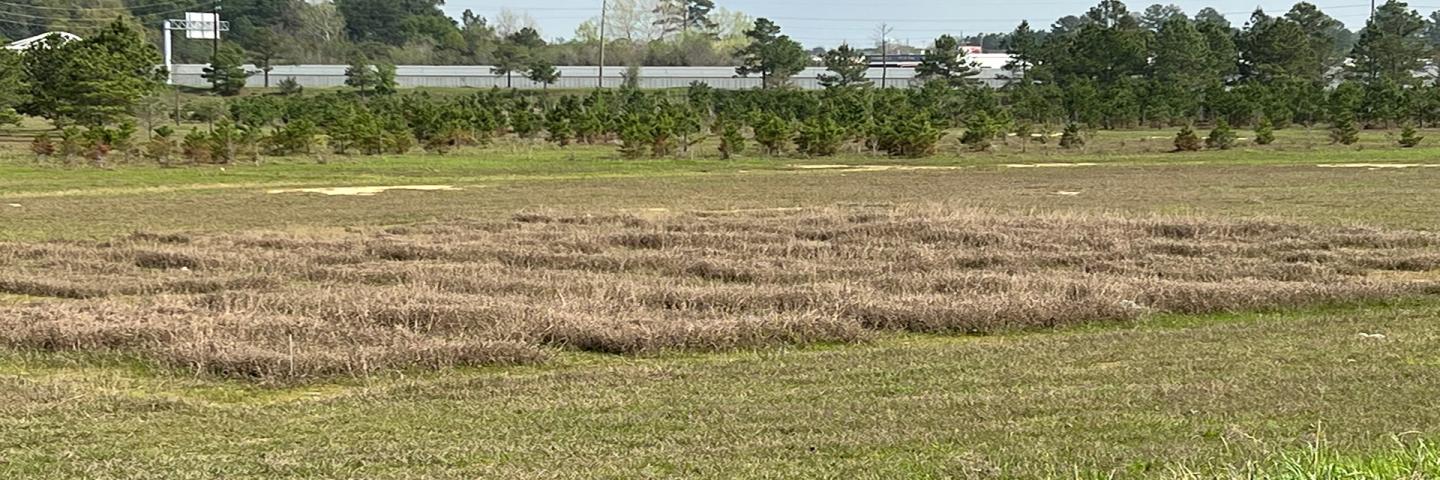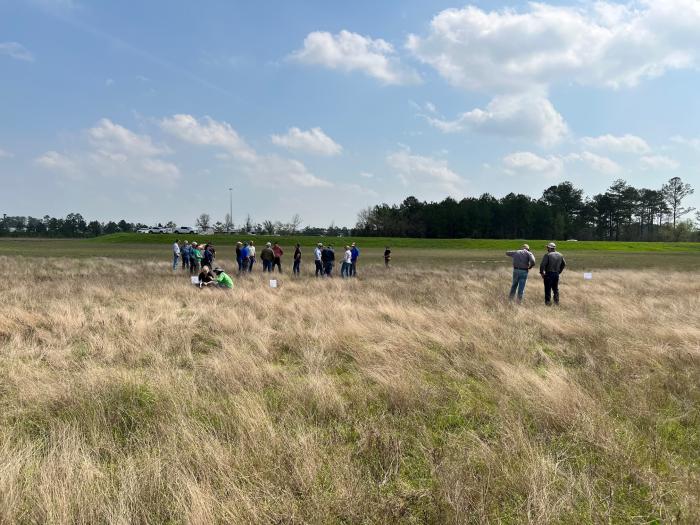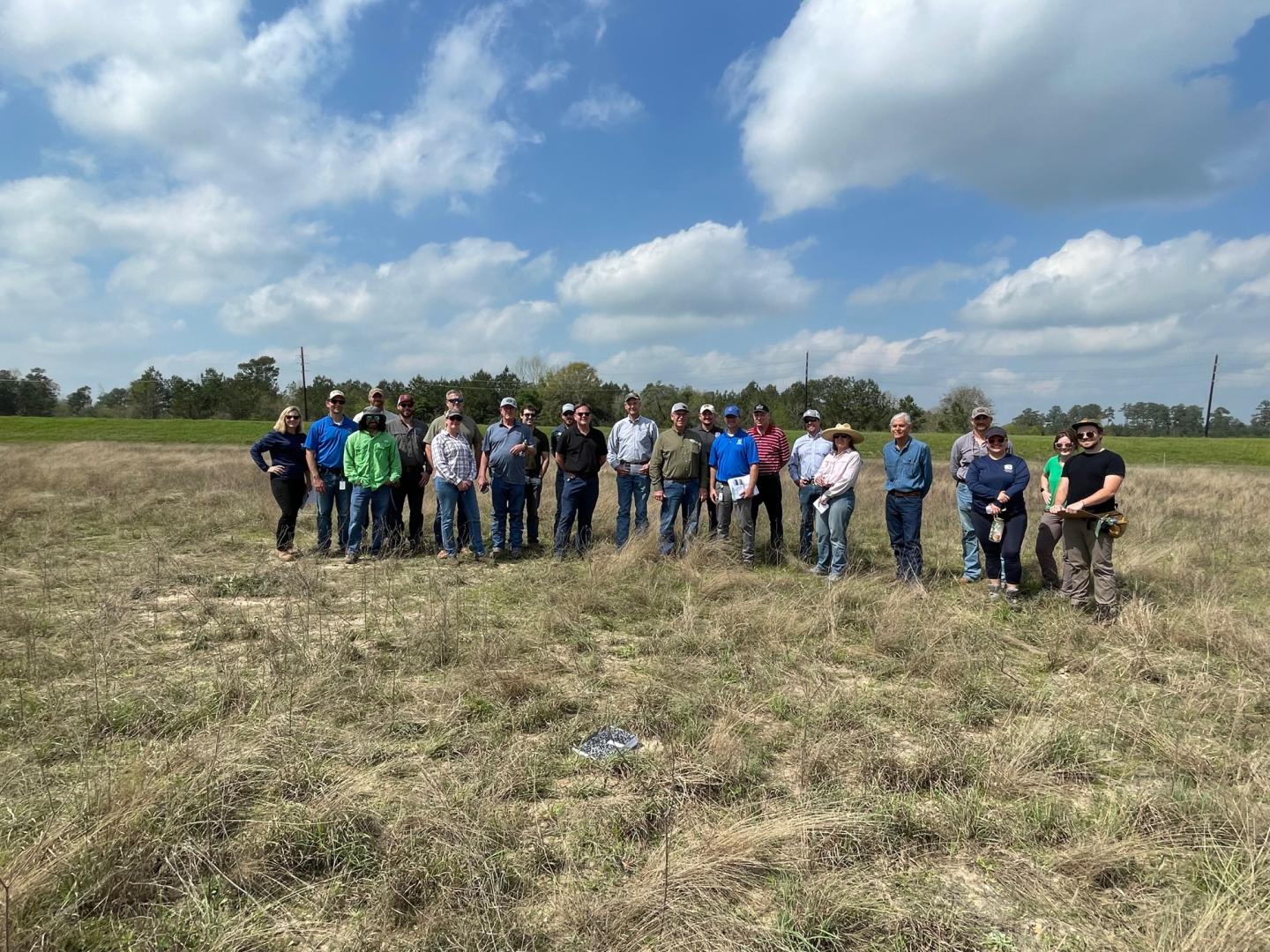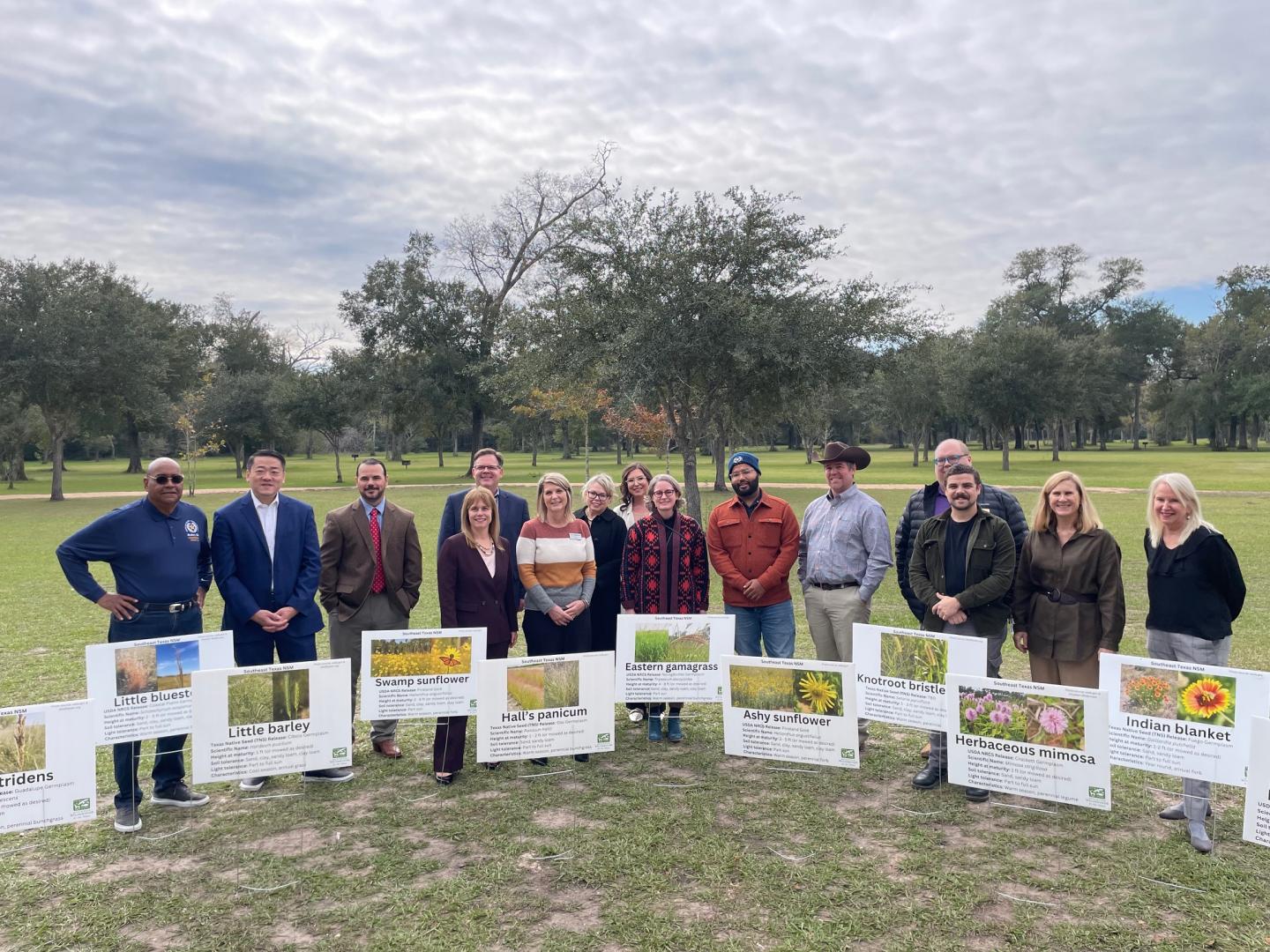NRCS Conservation Plants Perform Successfully in Urban Conservation Plantings

USDA NRCS native conservation plants used in Harris County Texas to protect flood control canals and retention ponds leads to new commercial production of 8 conservation plant releases and is a conservation model for other urban areas in the Southeast.
The landscape is ever changing, and as urban areas expand, they present new conservation problems for land managers. Flooding during large storm events is a major problem in low lying coastal areas of the southeastern United States. Metropolitan areas such as Houston, TX have extensive networks of canals and retention ponds to help mitigate damaging floods. Kory Nickell, Turf Establishment Coordinator for the Harris County Flood Control District (HCFCD), estimates Harris County plants 400-500 acres of channel and detention basins annually to bermudagrass. Recently the HCFCD has shown interest in using native plant species due to their ability to root deeply and persist in poor soils and to lower maintenance expenses.

Texas Native Seeds Program (TNS) and Houston Wilderness established test plots of regionally adapted native plant releases in two detention basins, one with sandy soil and another with a clay base. Twelve species performed exceptionally well in the two retention basins. Many of the best performing conservation plants were released from the Texas Plant Materials Centers (PMC) (Kingsville, Knox City, Nacogdoches) and the TNS program including Coastal Plains Germplasm little bluestem, Harrison Germplasm Florida paspalum, Crockett Germplasm herbaceous mimosa, Cajun Sunrise Germplasm ashy sunflower, Pineland Gold Germplasm swamp sunflower, 'Nacogdoches' eastern gamagrass, Guadalupe Germplasm white tridens, Oso Germplasm Hall’s panicum, ‘Lometa’ Indiangrass, Fuego Germplasm blanket flower, and TNS knotroot bristlegrass. Many of these PMC plants were released for other conservation purposes such as range restoration, forage, or wildlife habitat, but also have proven utility for stabilization in urban areas. The conservation plants were planted as a mix in two retention basins as a proof of concept and monitored for establishment. This seed mix has been named the Southeast Texas Native Seed Mix (SET NSM). Unfortunately, many of these releases were not in commercial production in the quantities needed to meet the planting needs of HCFCD. However, Houston Wilderness was instrumental in advocating the benefits of using native species and in developing a coalition of buyers and growers called Regional Access to Native Seed Mix (RANSM). The HCFCD is contracting with commercial seed growers participating in RANSM to produce several conservation plant releases destined for 70-100 acres in the flood control system in 2024.

The RANSM Coalition kicked off a public media announcement in late November 2023 highlighting the use of and long-term effectiveness of the SET NSM, and to serve as a model for other municipalities. This project highlights the power of collaboration and partnerships in getting conservation on the ground. For more information about this project please contact the East Texas Plant Materials Center.

For additional information on specific species of plants mentioned in the article, please see the USDA PLANTS database. Technical information and guidance on the use of conservation plants to address resource concerns can be found on the Plant Materials Program website or contact the nearest Plant Materials Center or plant materials specialist.

